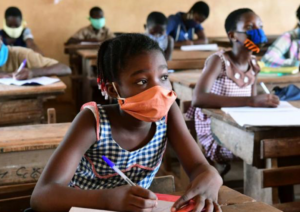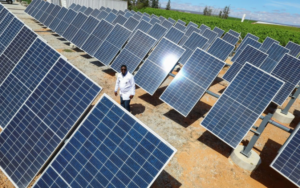Africa is a continent of immense beauty, rich culture, and abundant resources. However, it also faces the harsh reality of poverty, which has persisted for generations. Poverty in Africa is a complex issue with multifaceted challenges, but there is one key strategy that has the potential to combat it effectively. In this blog post, we will delve into this strategy, examining its impact, the obstacles it encounters, and the potential solutions for a brighter future.

Understanding the Scale of Poverty
Before diving into the strategy, it’s essential to understand the scale of poverty in Africa. According to recent data, over 40% of sub-Saharan Africa’s population lives below the international poverty line, struggling to meet their basic needs for food, clean water, and shelter. This staggering statistic highlights the urgency of addressing poverty on the continent.
Education: A Pathway Out of Poverty
The Transformative Power of Education
Education is often hailed as the most potent weapon to change the world, and in the context of Africa’s battle against poverty, this adage holds true. Access to quality education provides individuals with knowledge, skills, and opportunities, offering a pathway out of poverty.
Breaking the Cycle of Generational Poverty
One of the most significant impacts of education is its potential to break the cycle of generational poverty. When children have access to education, they acquire the tools to secure better employment prospects and escape the grip of poverty that may have affected their families for generations.
Fostering Entrepreneurship and Innovation
Education also fosters entrepreneurship and innovation, enabling individuals to create their businesses, generate income, and contribute to economic growth. In a continent as diverse as Africa, innovation can unlock new possibilities for economic development.
Challenges on the Road to Education
The Hurdles to Educational Access
Education is unequivocally recognized as a potent strategy to uplift societies and alleviate poverty. In the diverse tapestry of the African continent, however, this powerful tool faces numerous challenges that hinder its potential to transform lives and societies.
Socio-Economic Factors
In Africa, a significant proportion of the population grapples with socio-economic challenges. Poverty often begets a lack of access to quality education. Families struggling to make ends meet may prioritize immediate needs such as food and shelter over investing in education. This perpetual cycle of poverty, intertwined with limited access to education, becomes a formidable barrier to breaking free from the clutches of economic hardship.
Gender Disparities
Gender disparities in education persist across many African nations. Cultural norms, traditional beliefs, and societal expectations often favor educating boys over girls. In some regions, early marriages and societal roles confine young girls to household duties rather than allowing them to pursue education. Addressing these gender imbalances is crucial for empowering girls and ensuring equal educational opportunities.
Geographical Inequalities
Geographical disparities play a significant role in hindering educational access. Remote and rural areas face severe shortages of educational facilities, qualified teachers, and learning resources. Families residing in such areas often lack the means to send their children to distant schools, further exacerbating the education gap between urban and rural regions.
Subsection: Infrastructure and Facilities
The inadequacy of educational infrastructure poses a substantial hurdle. Many schools lack basic amenities such as proper classrooms, sanitation facilities, and electricity. This dearth of infrastructure negatively impacts the learning environment, making it challenging for students to focus on their studies and hindering the overall quality of education.
Limited Access to Quality Education
One of the primary obstacles is the limited access to quality education, particularly in rural and disadvantaged areas. Many children in these regions lack access to well-equipped schools and skilled teachers, hindering their learning opportunities.
Gender Disparities
Gender disparities in education persist in Africa, with girls often facing greater barriers to accessing education. Cultural norms, early marriages, and inadequate facilities for girls contribute to these disparities.
Solutions for a Brighter Future
Overcoming Educational Challenges
Addressing these challenges is crucial to making education a key strategy to combat poverty in Africa.
Investment in Infrastructure and Teacher Training
Investing in educational infrastructure and teacher training can improve the quality of education in remote areas. By building more schools, providing resources, and training teachers, we can bridge the gap in educational access.
Promoting Gender Equality
Promoting gender equality in education involves challenging cultural norms and providing support to ensure that girls have the same educational opportunities as boys. Initiatives that address early marriages and encourage families to prioritize education for all children can help in this regard.
Conclusion
Education is undeniably a key strategy to combat poverty in Africa. By understanding the scale of poverty, recognizing the transformative power of education, and addressing the challenges it faces, we can work towards a brighter future for the continent. Investing in education is not just an investment in individuals; it’s an investment in Africa’s potential to overcome poverty and thrive.












